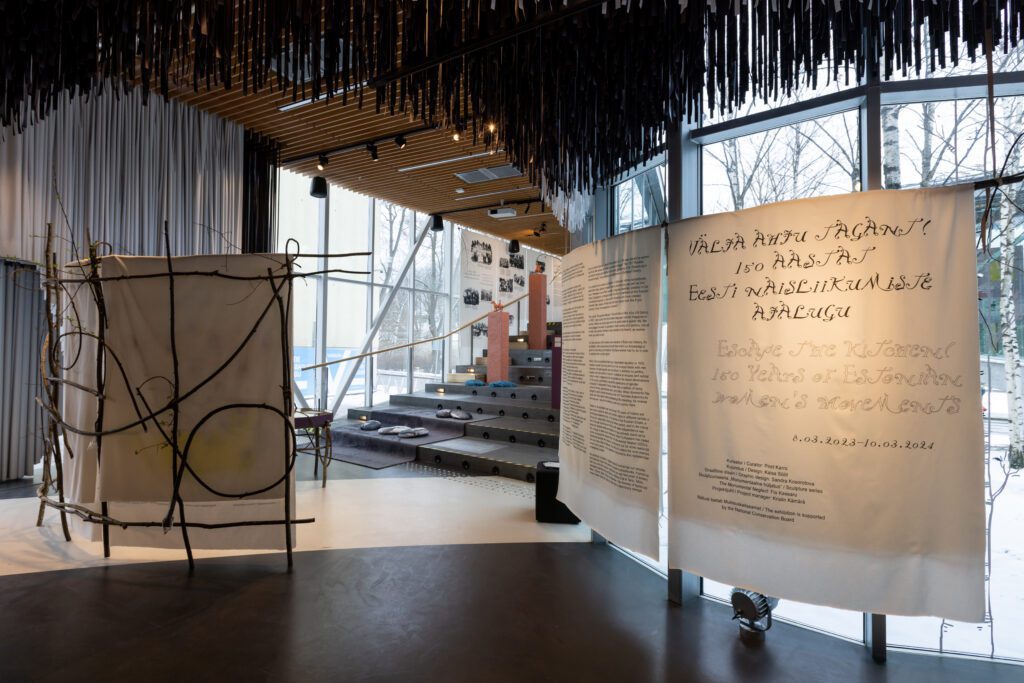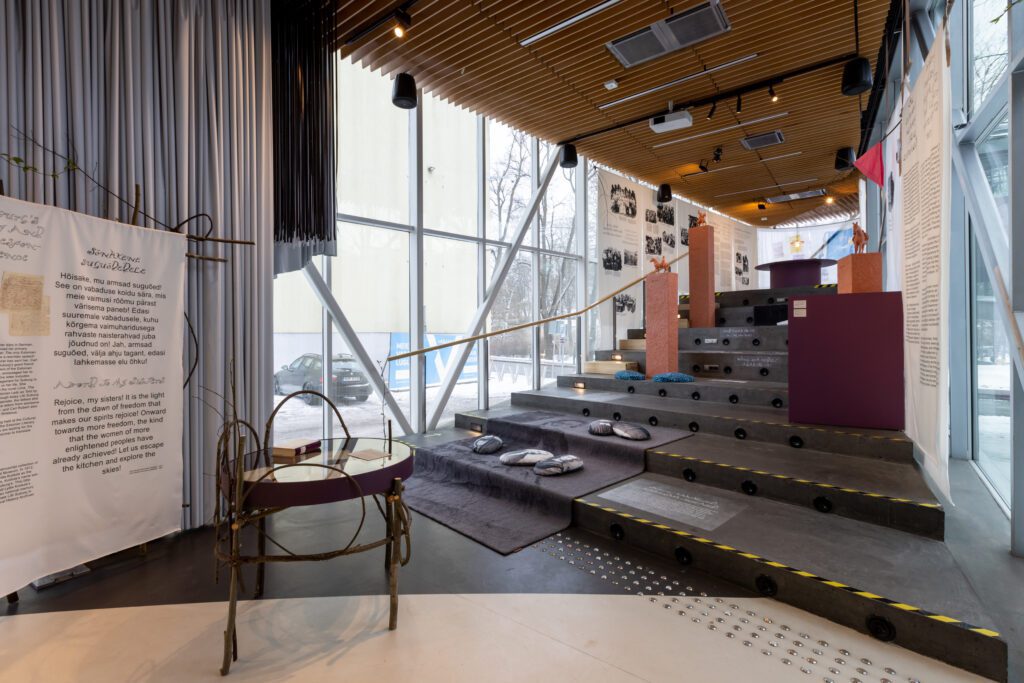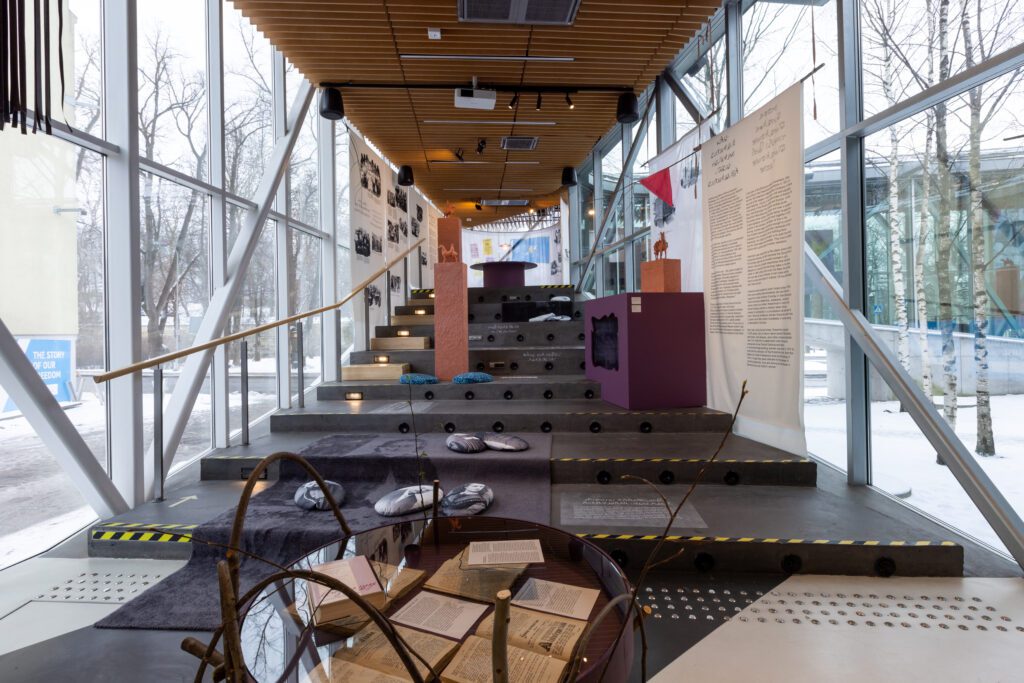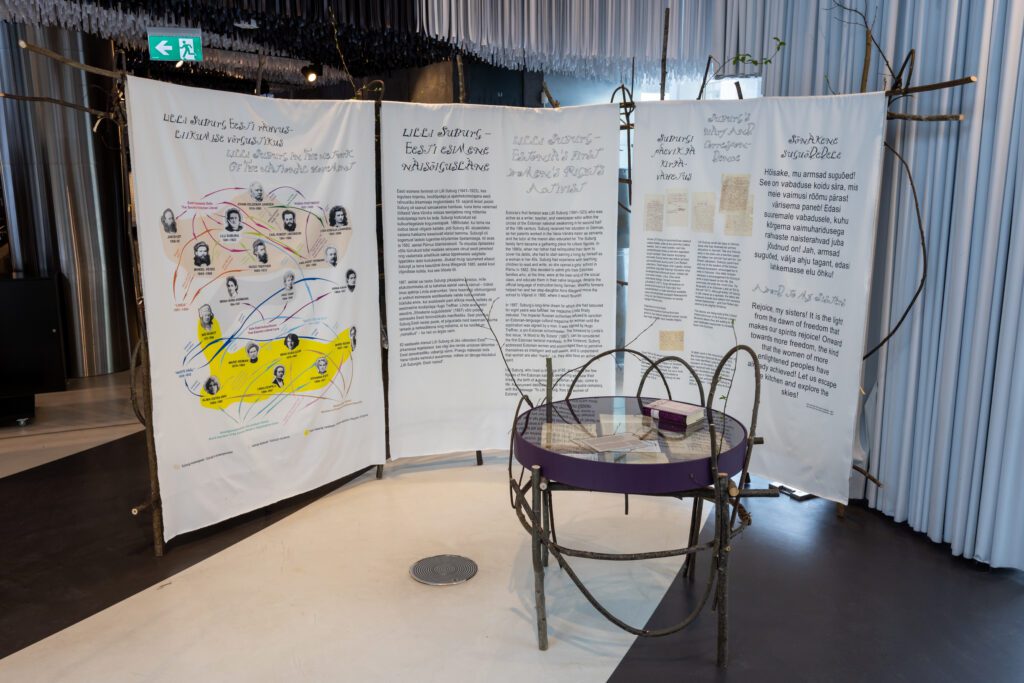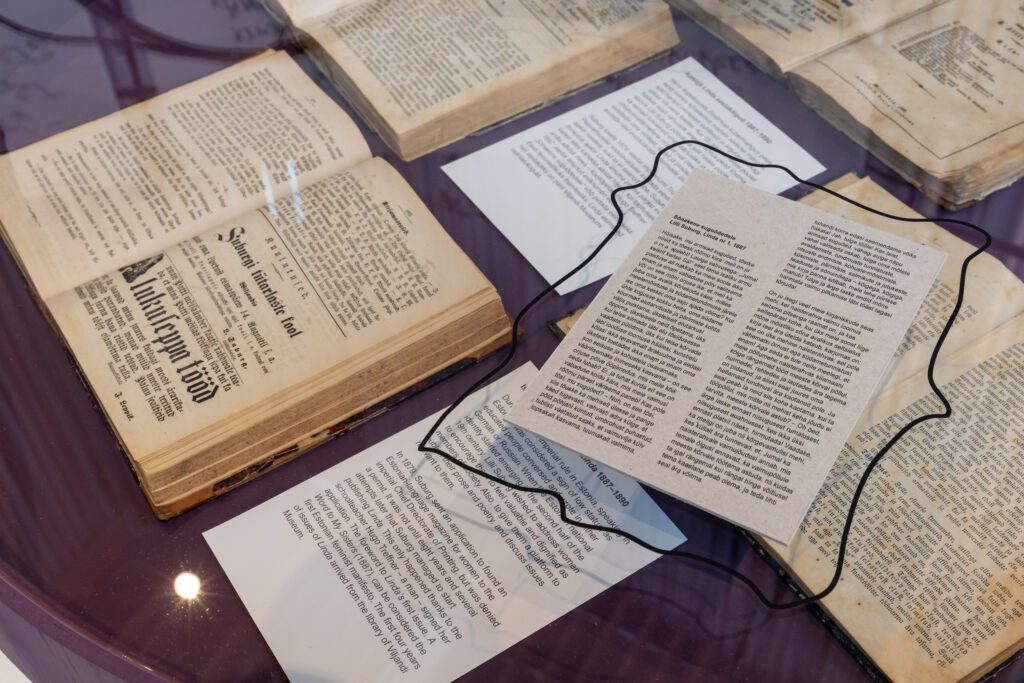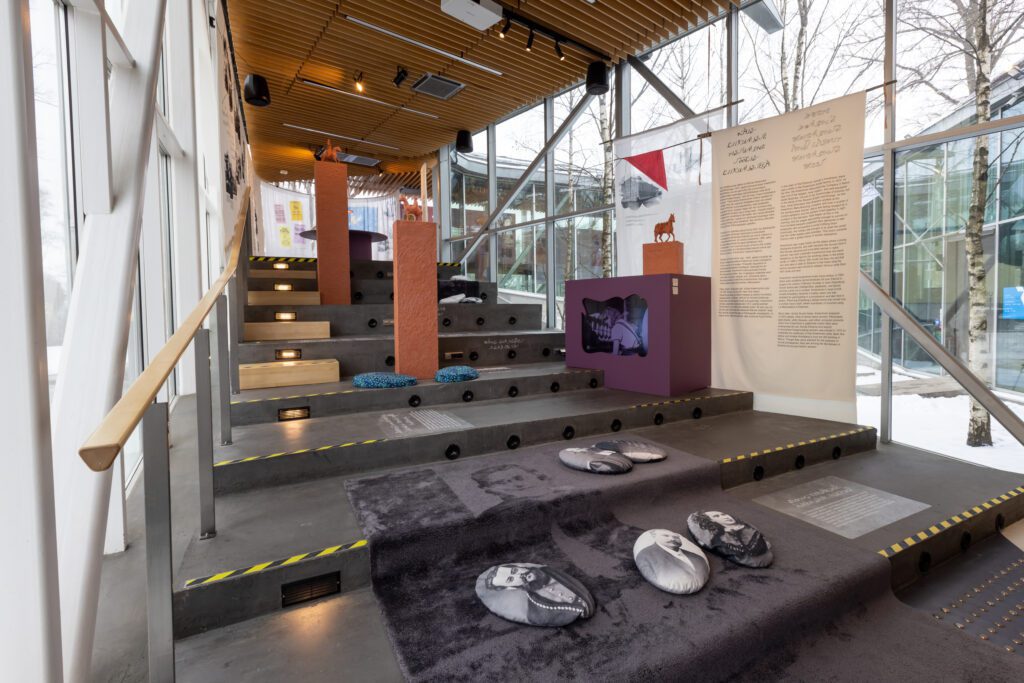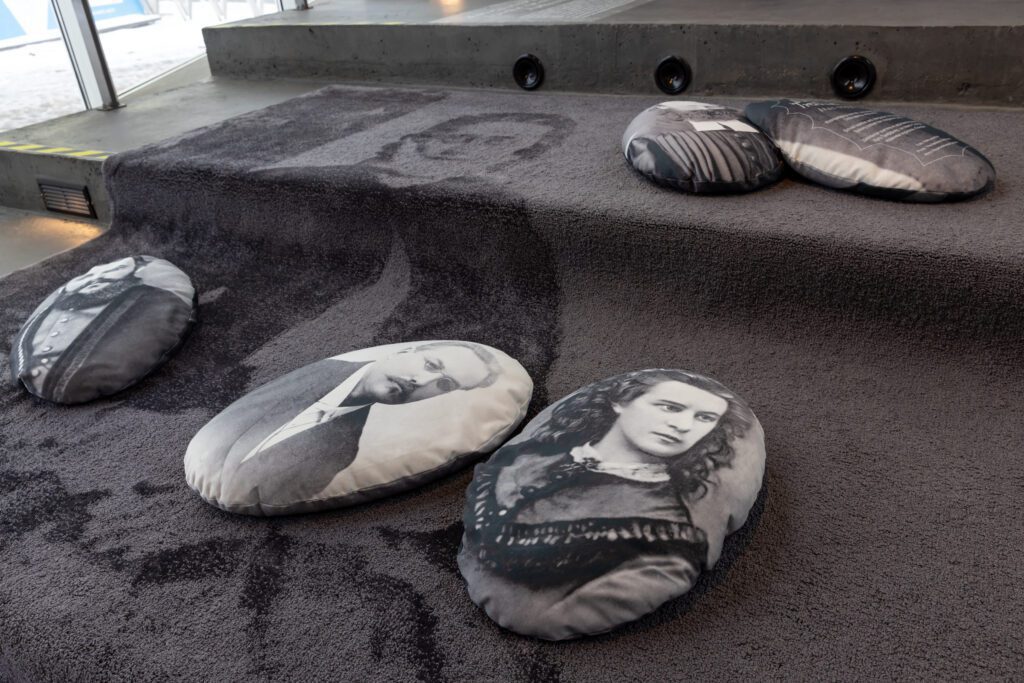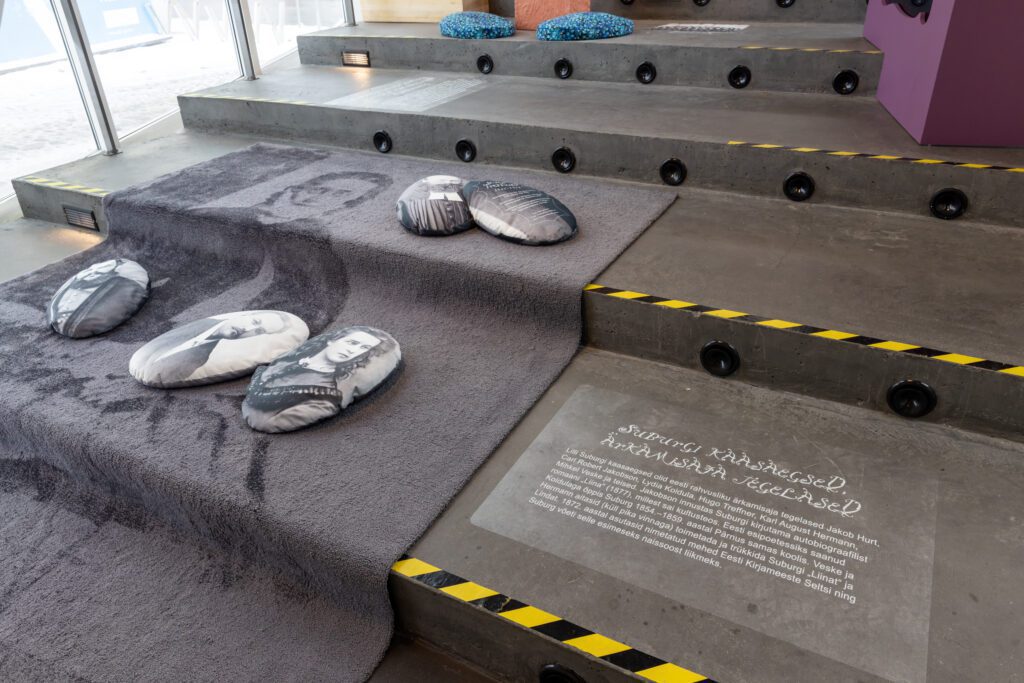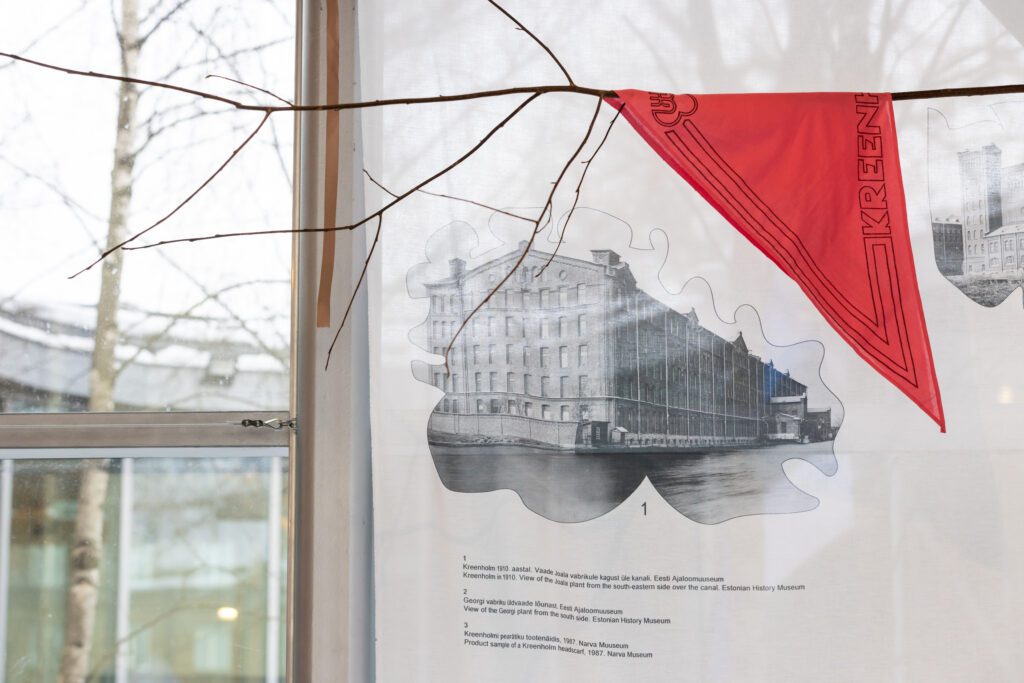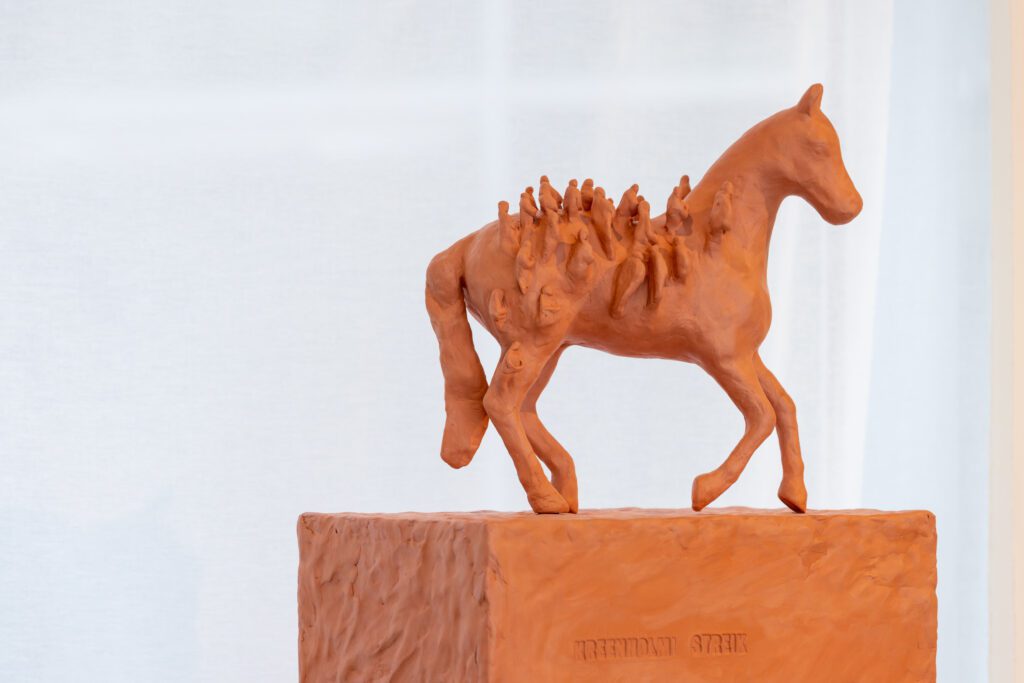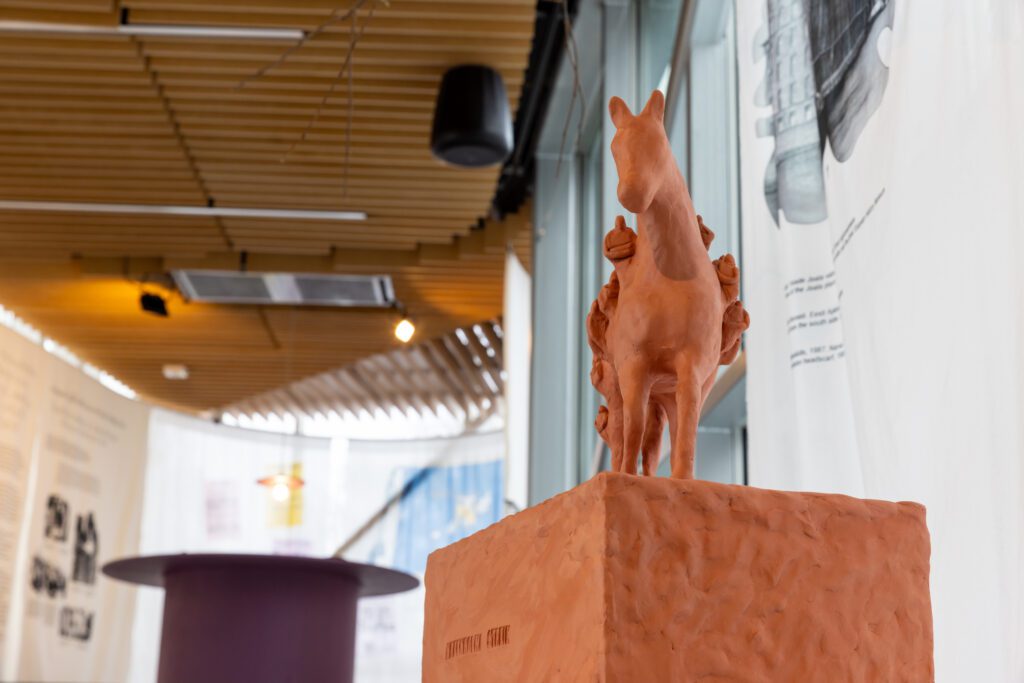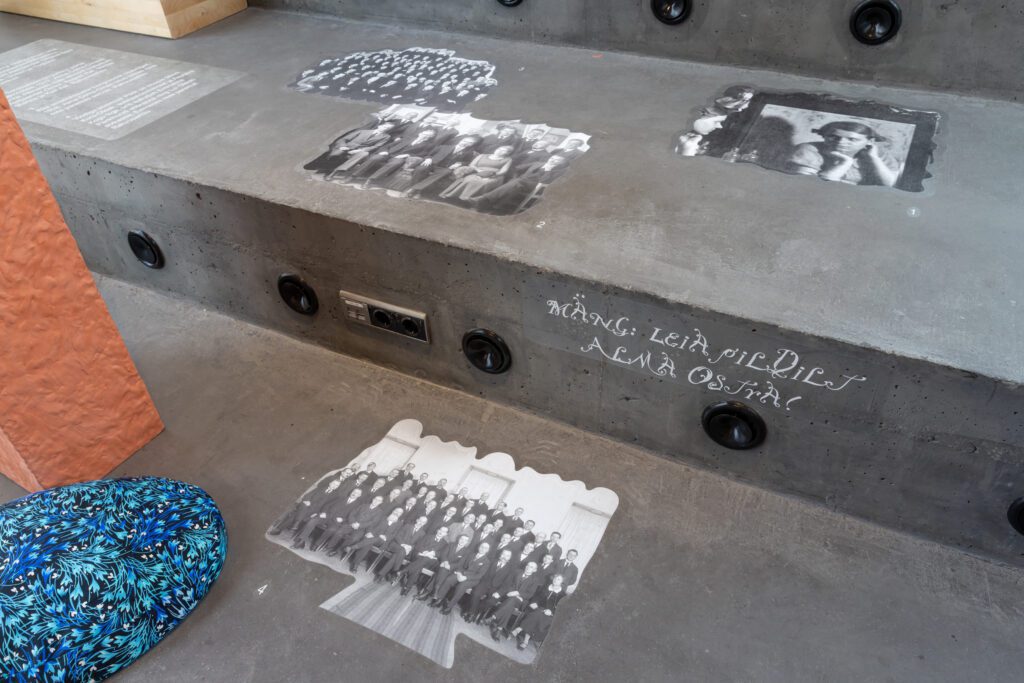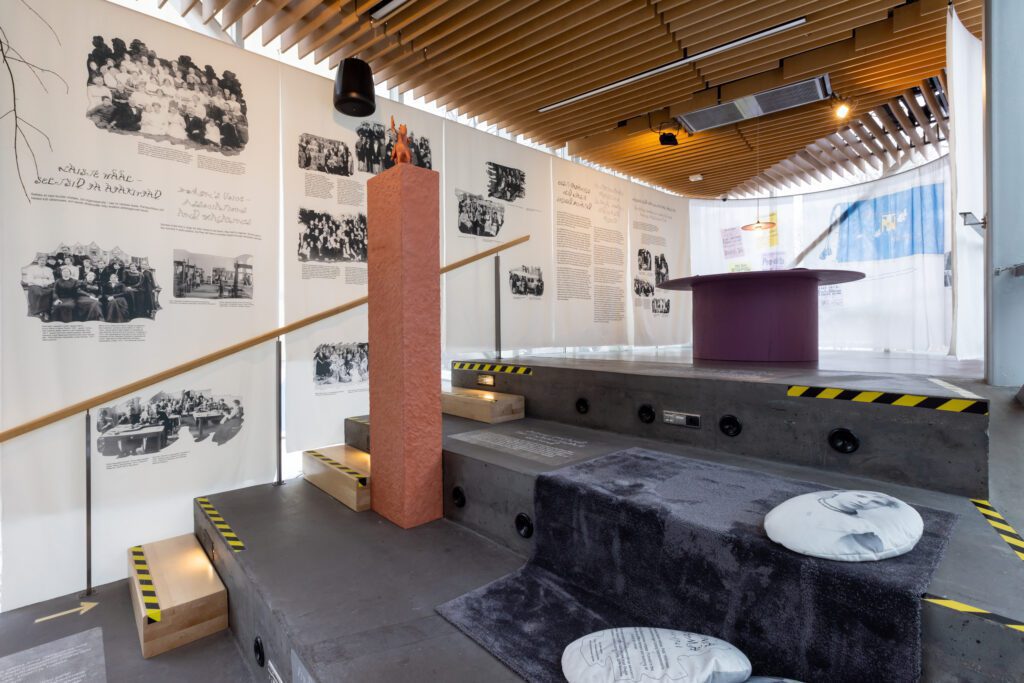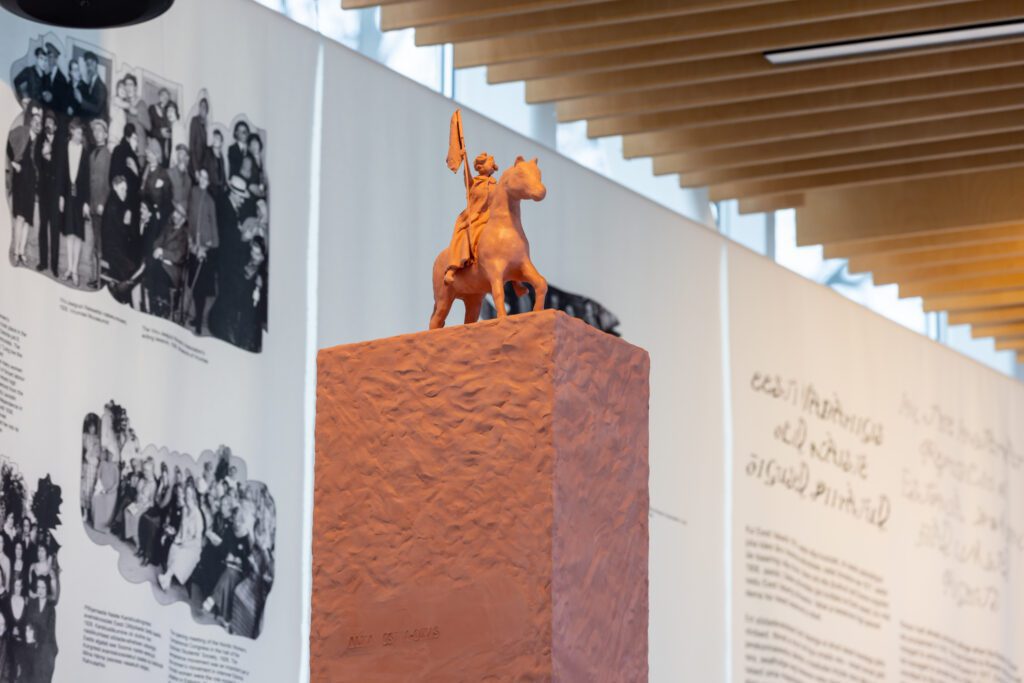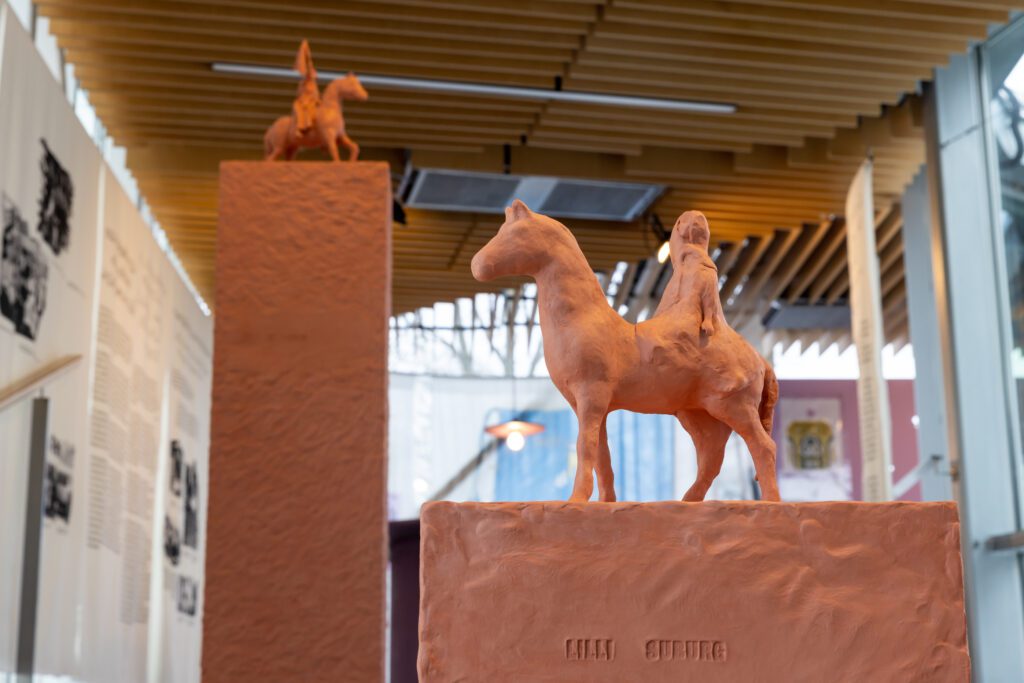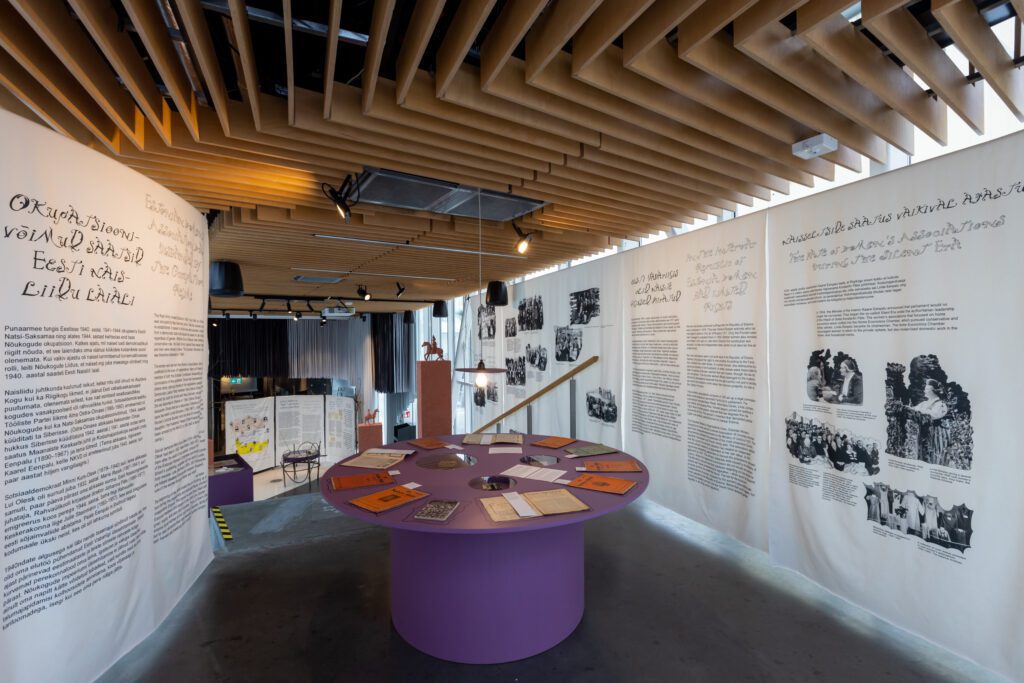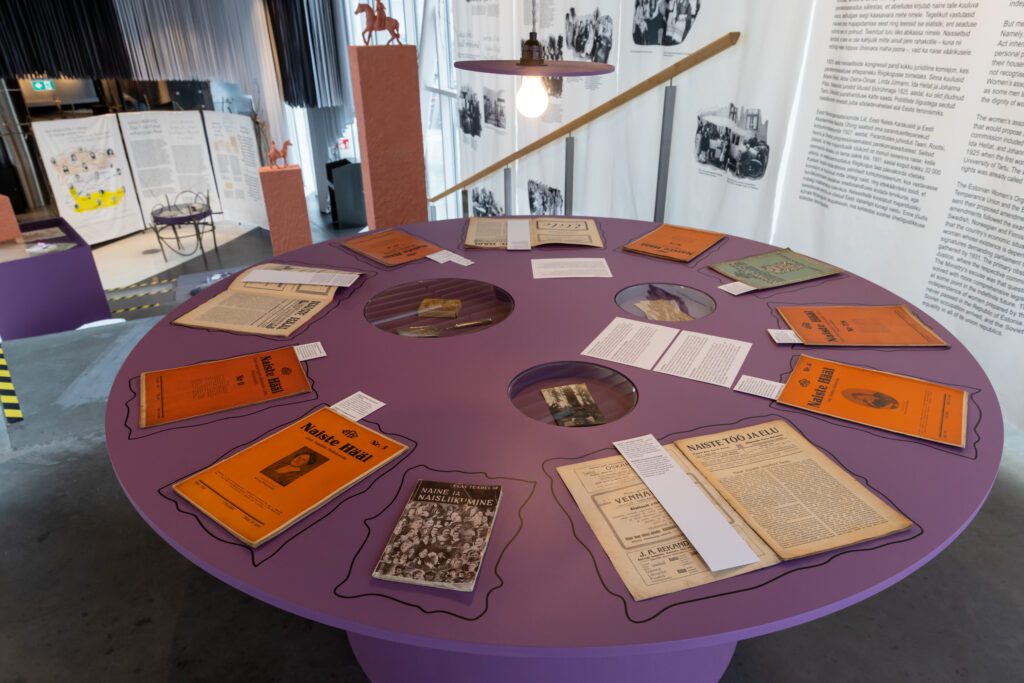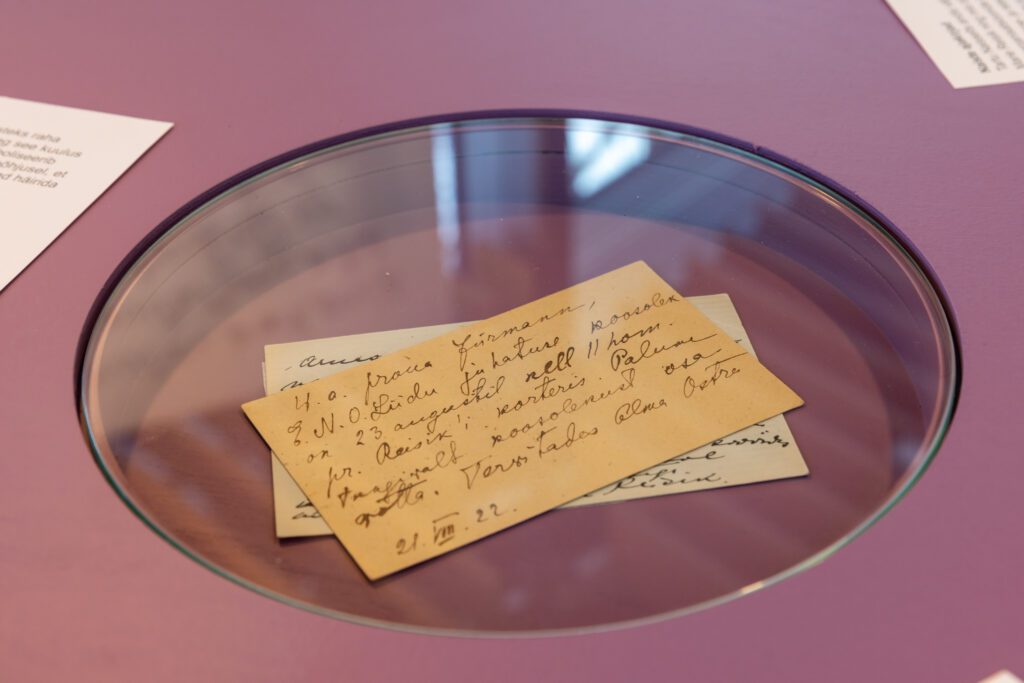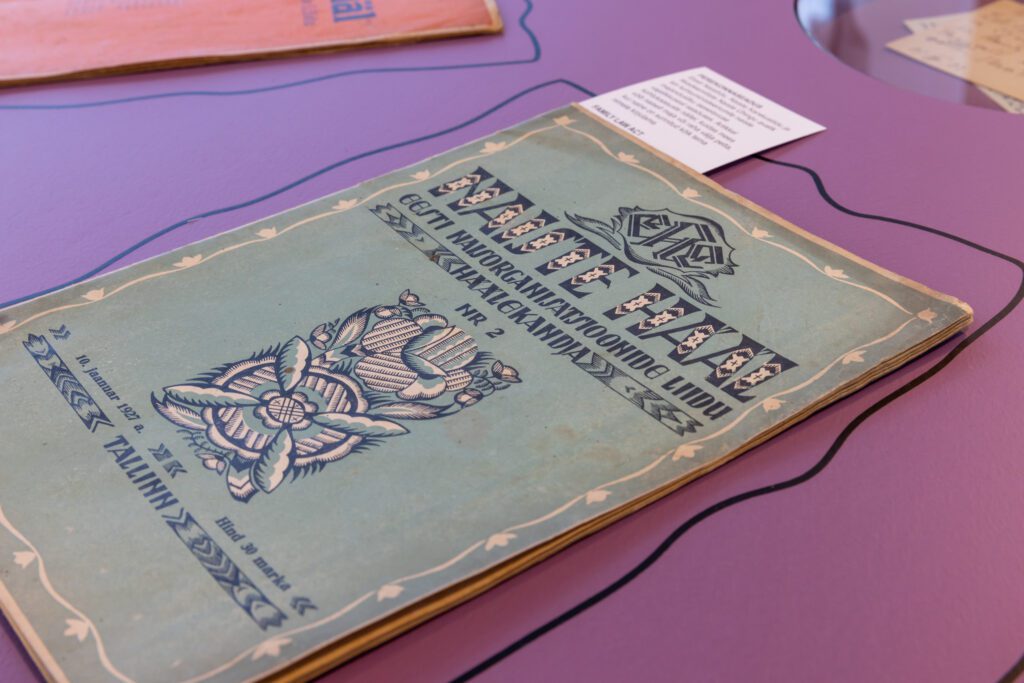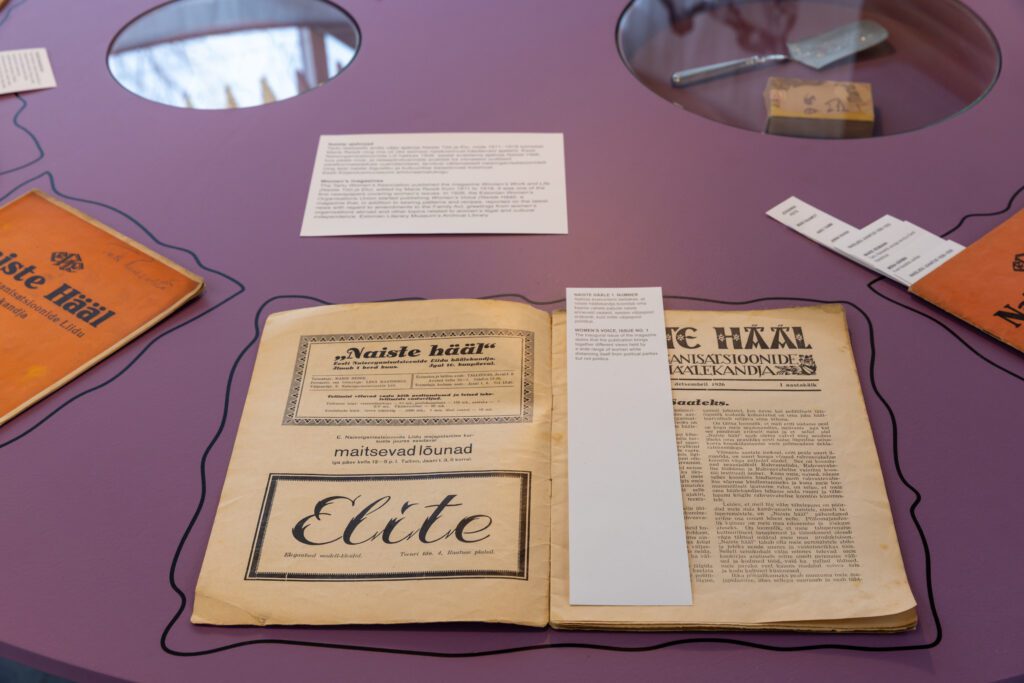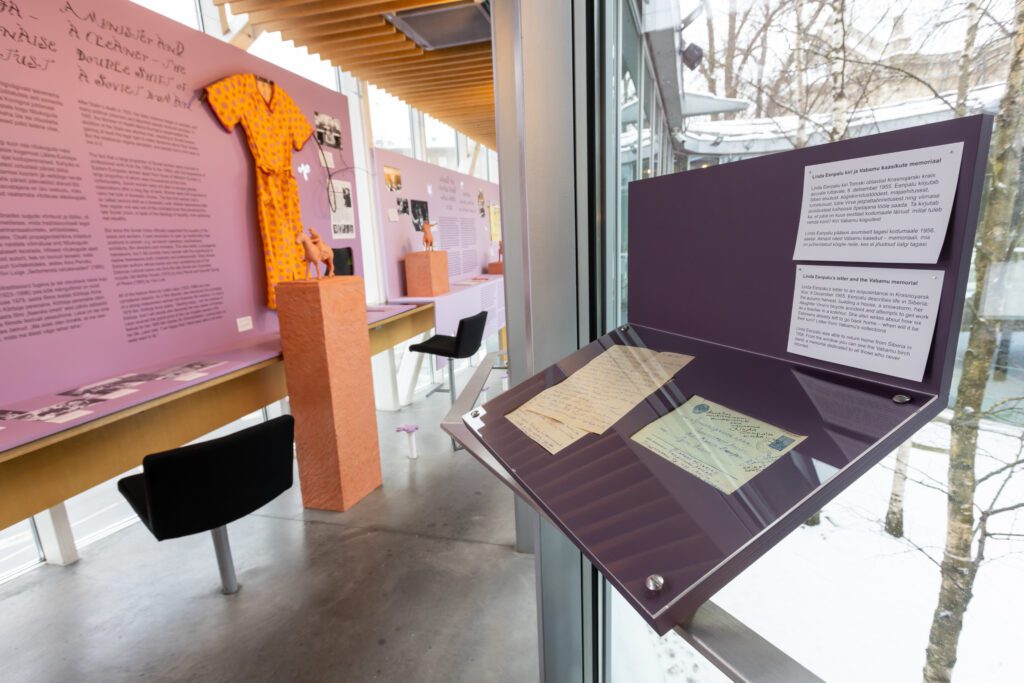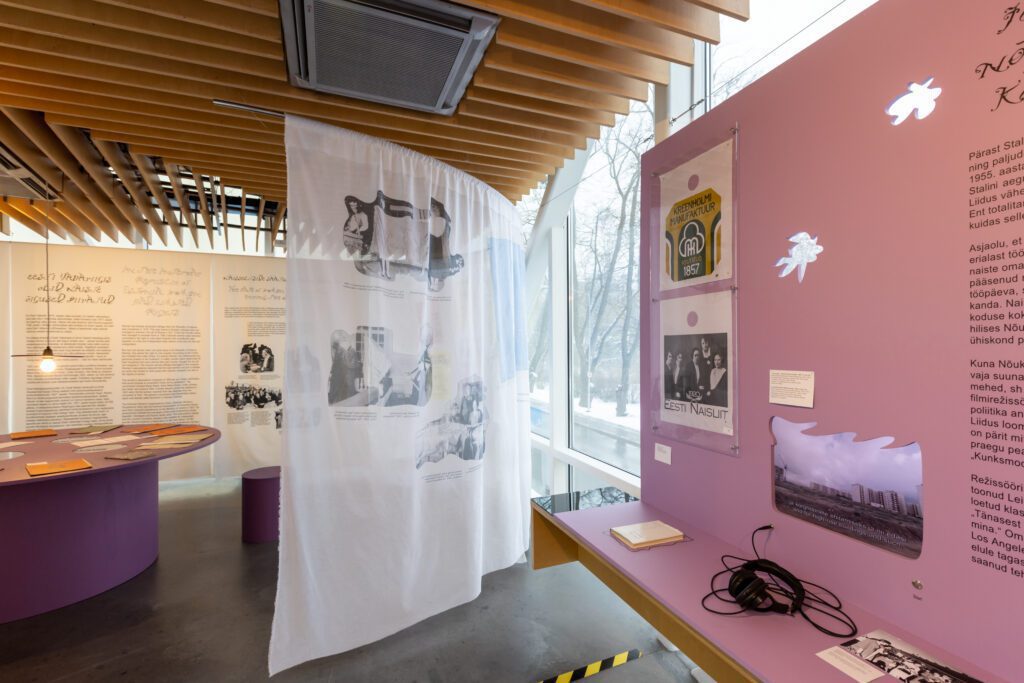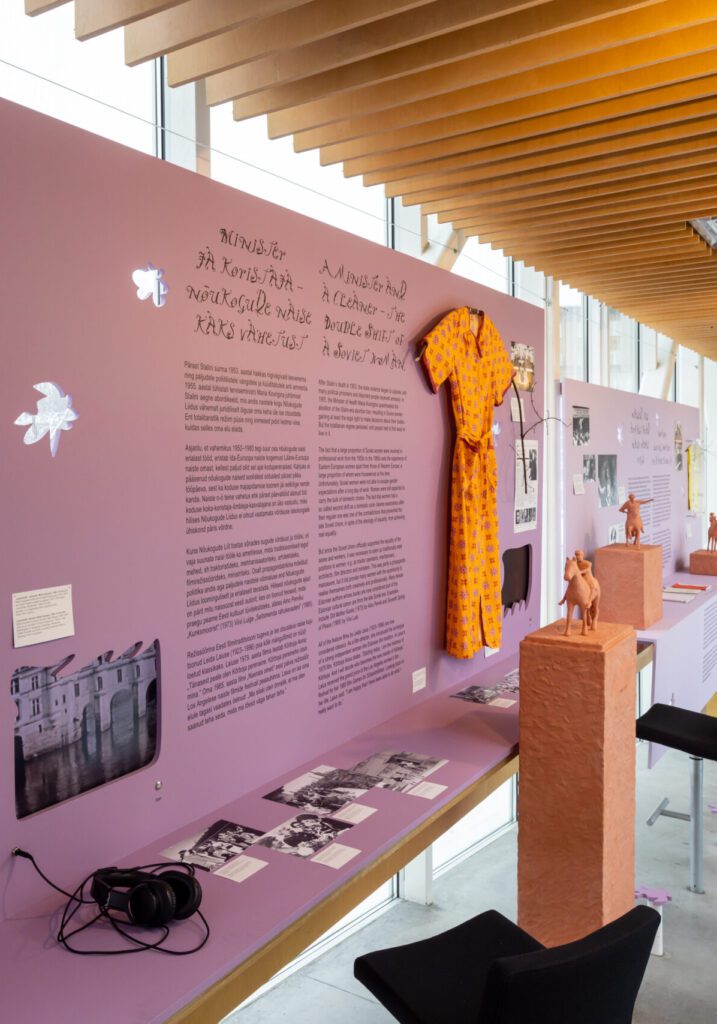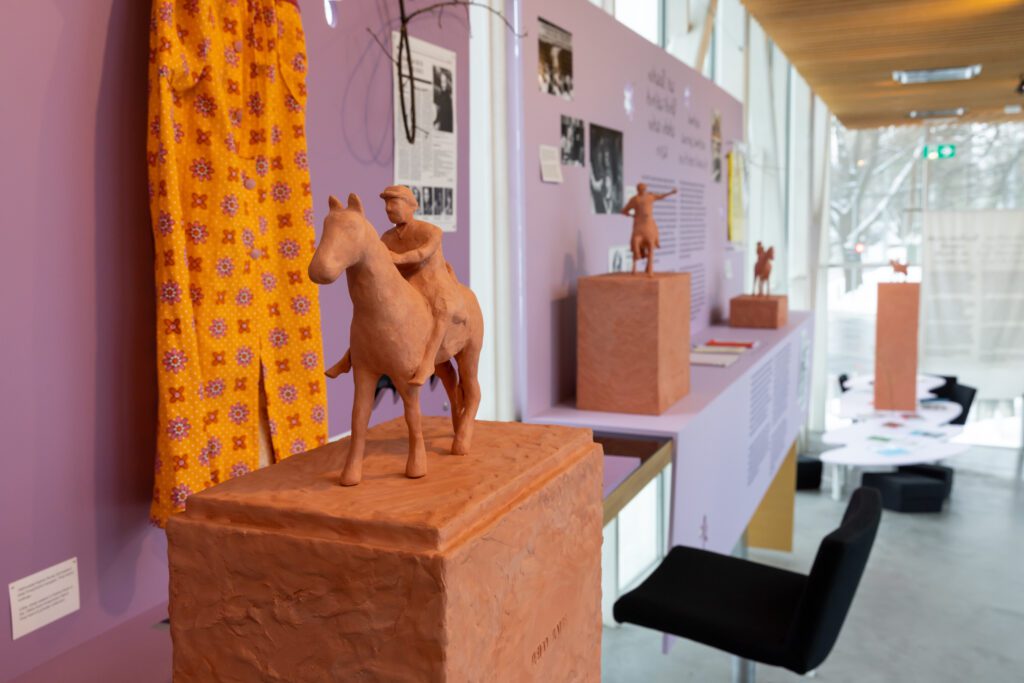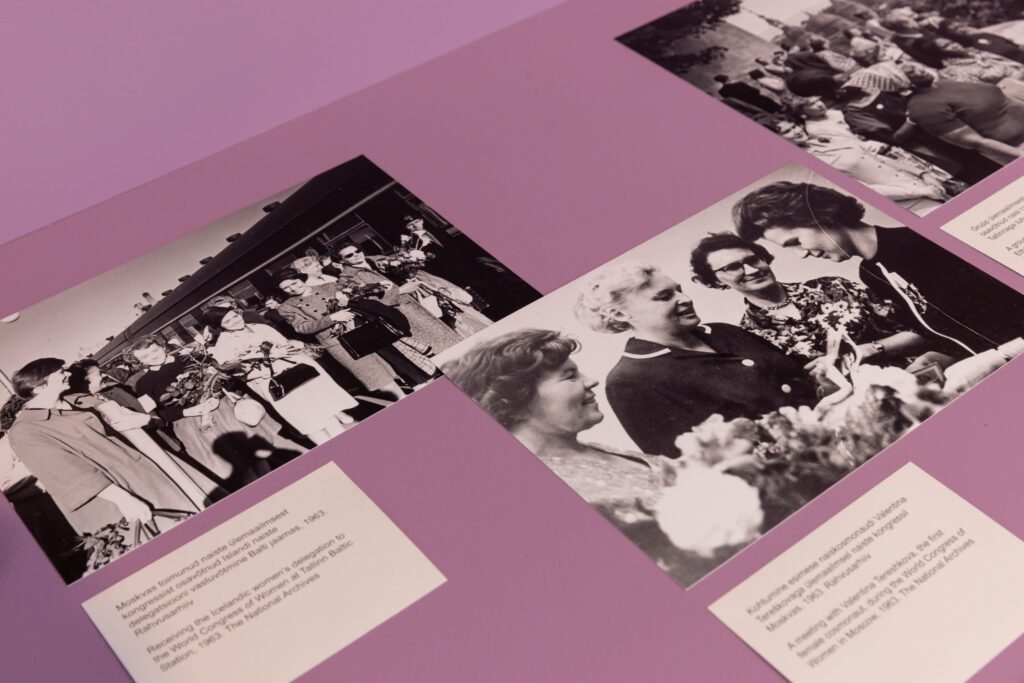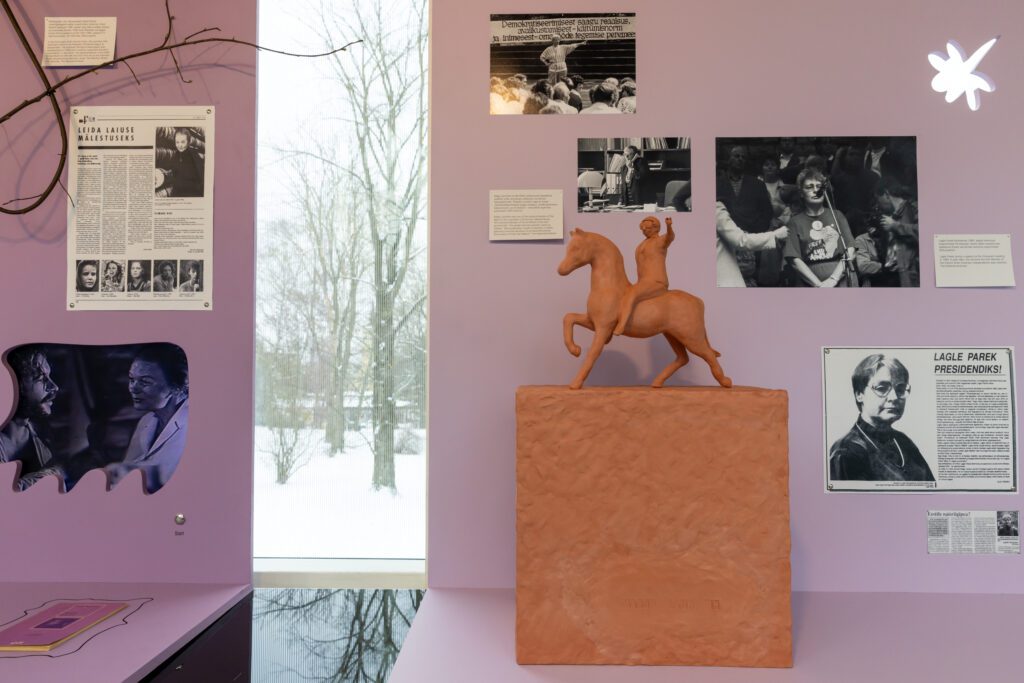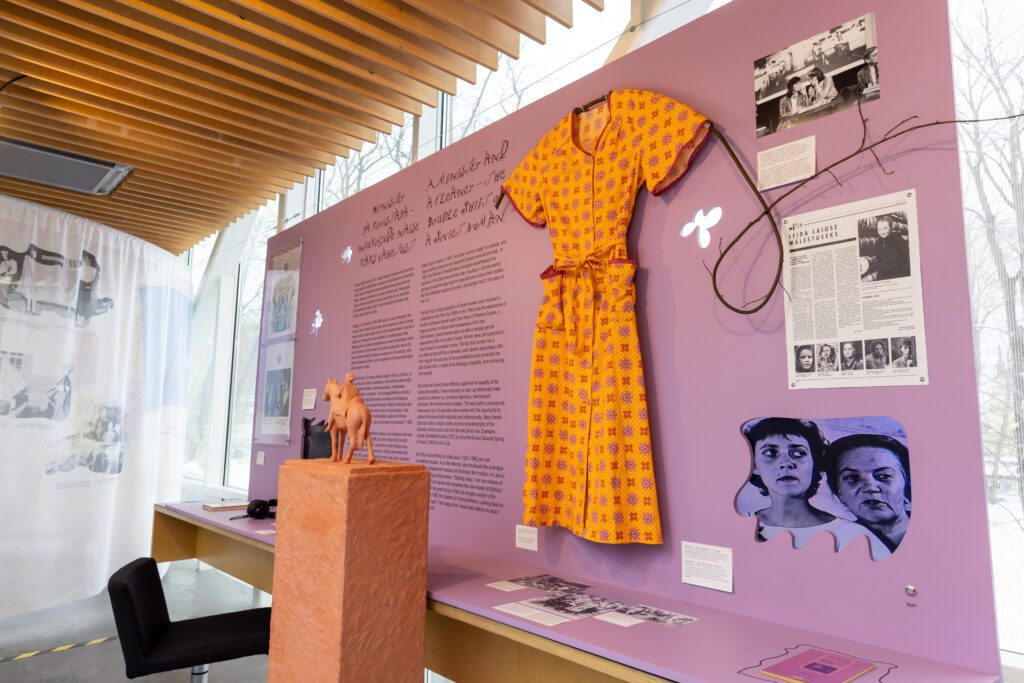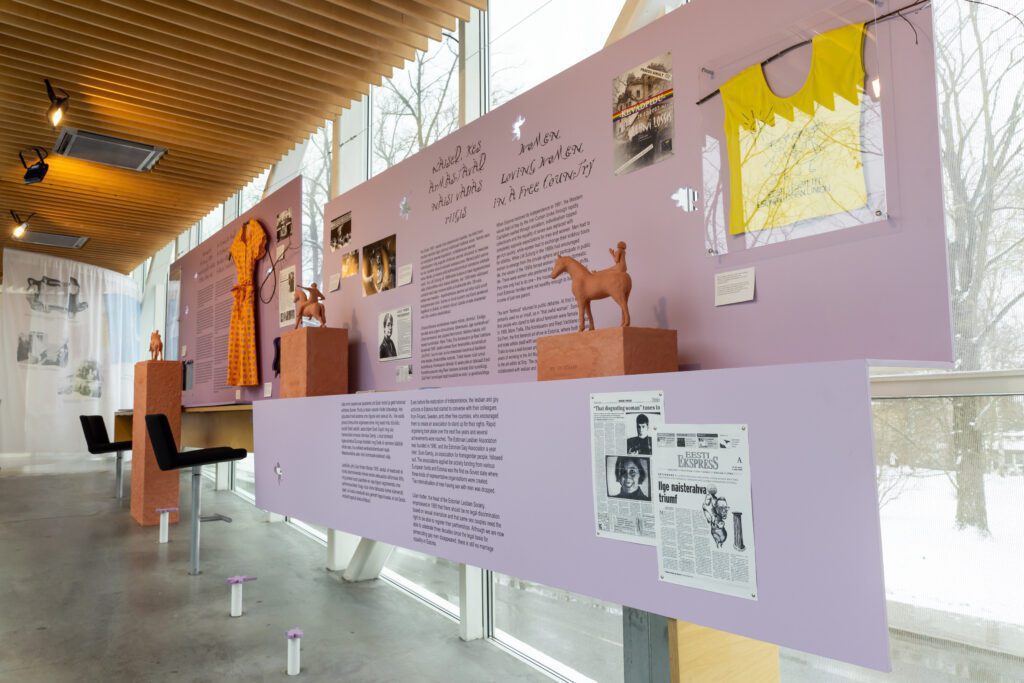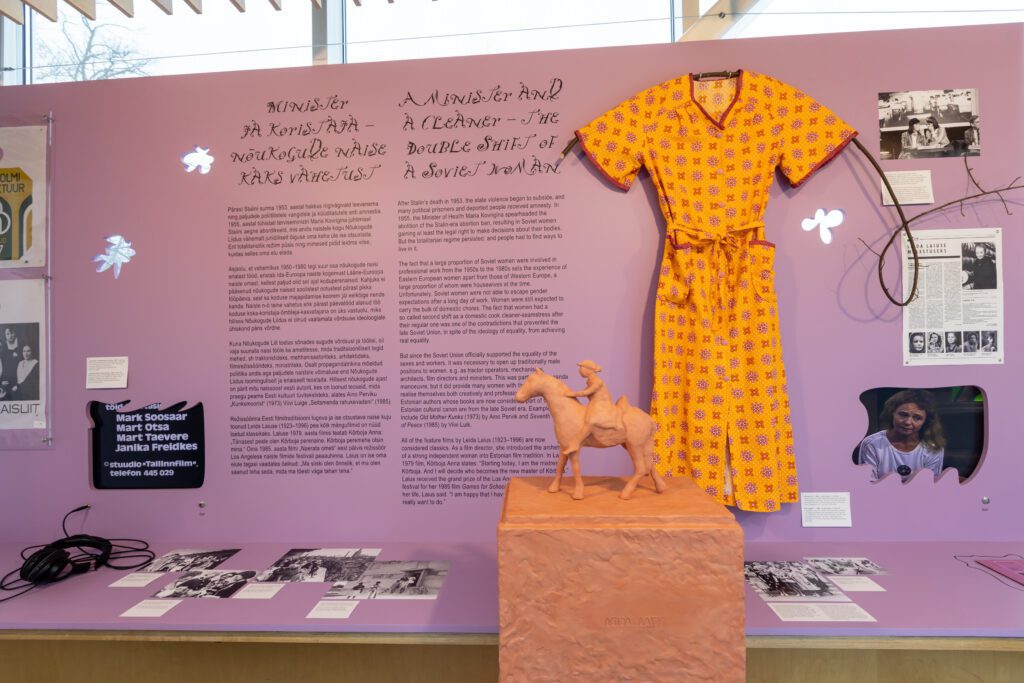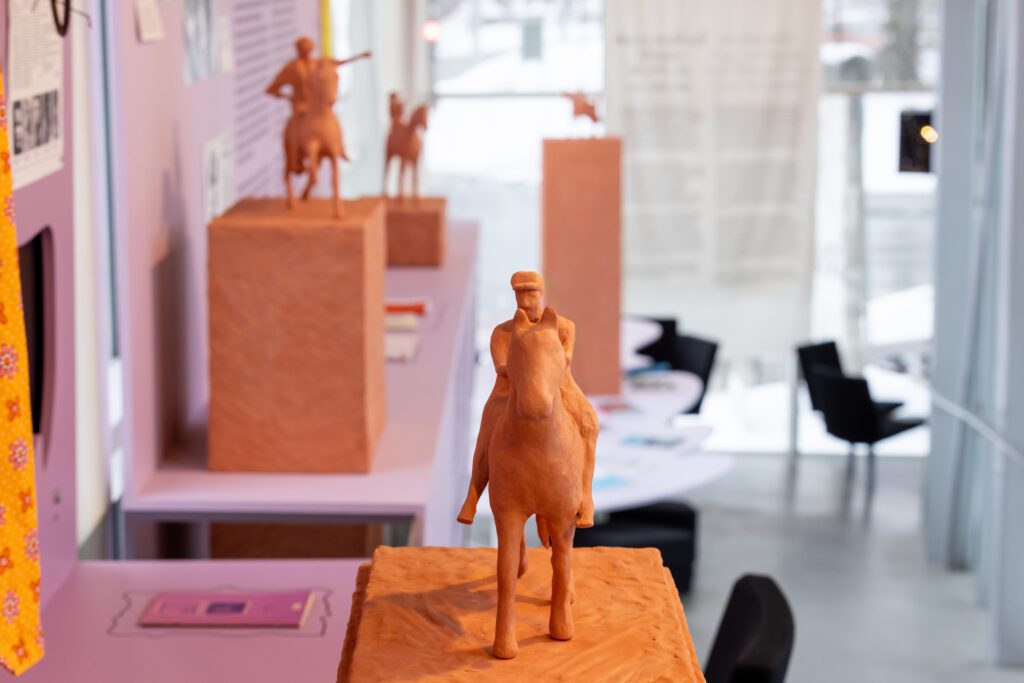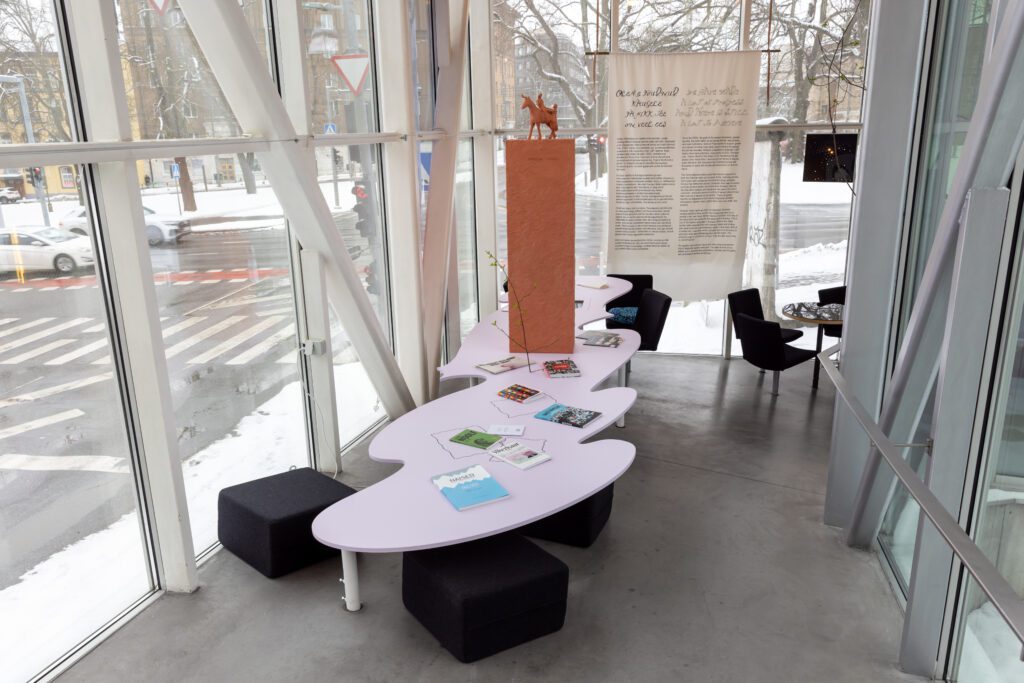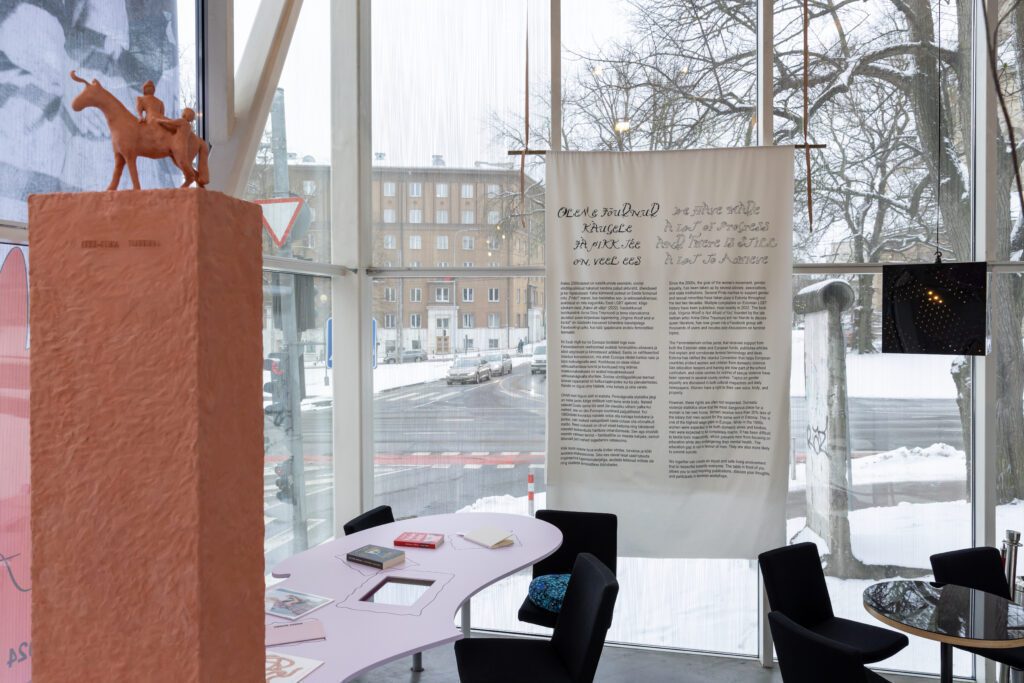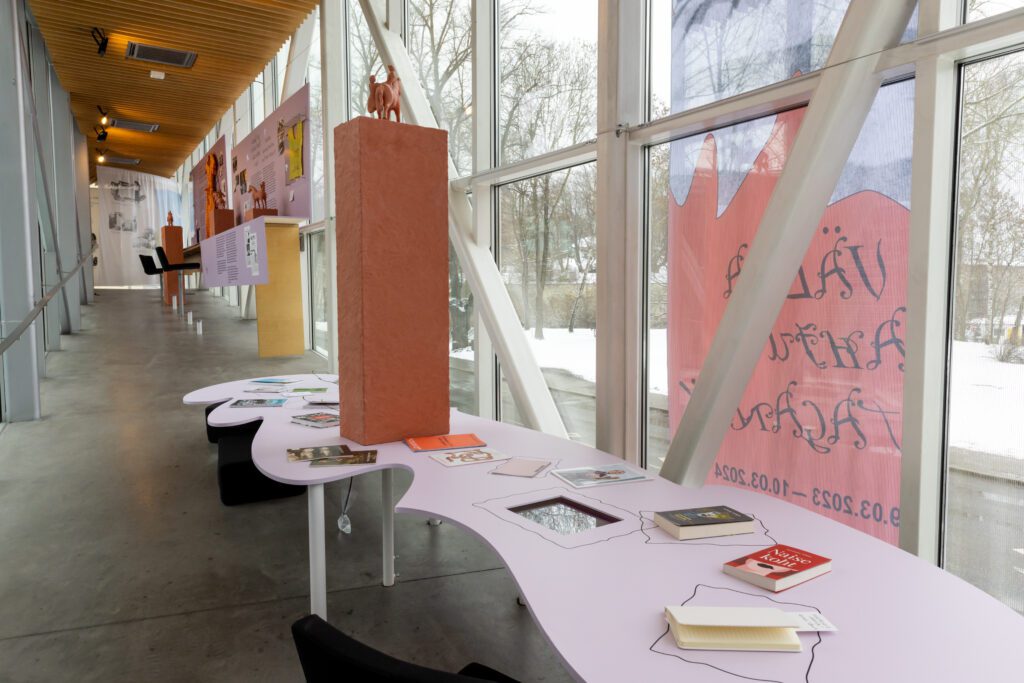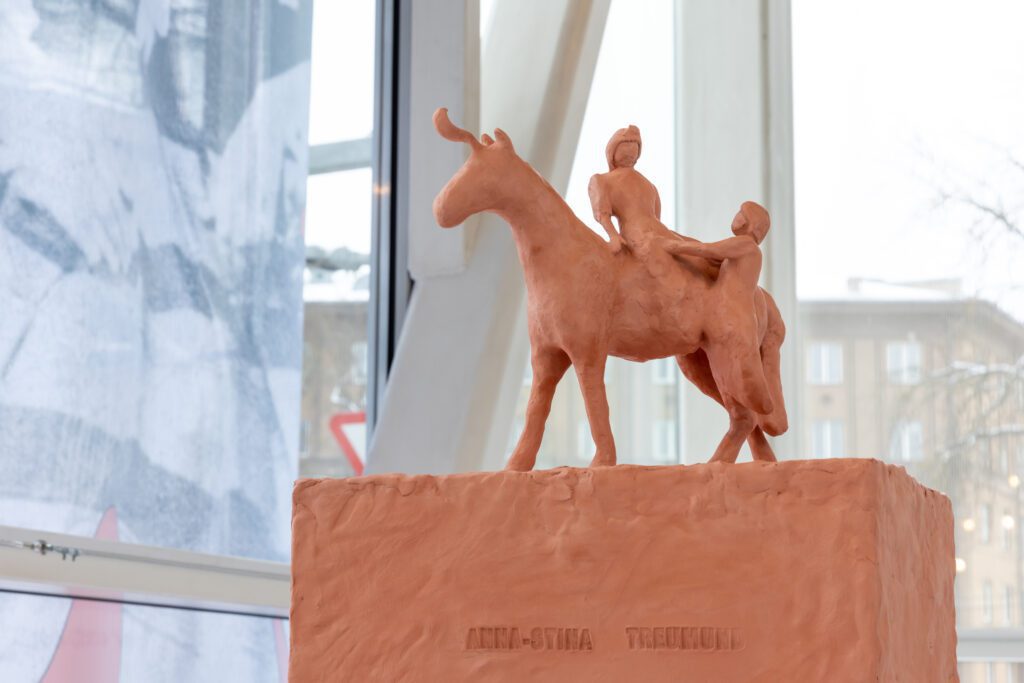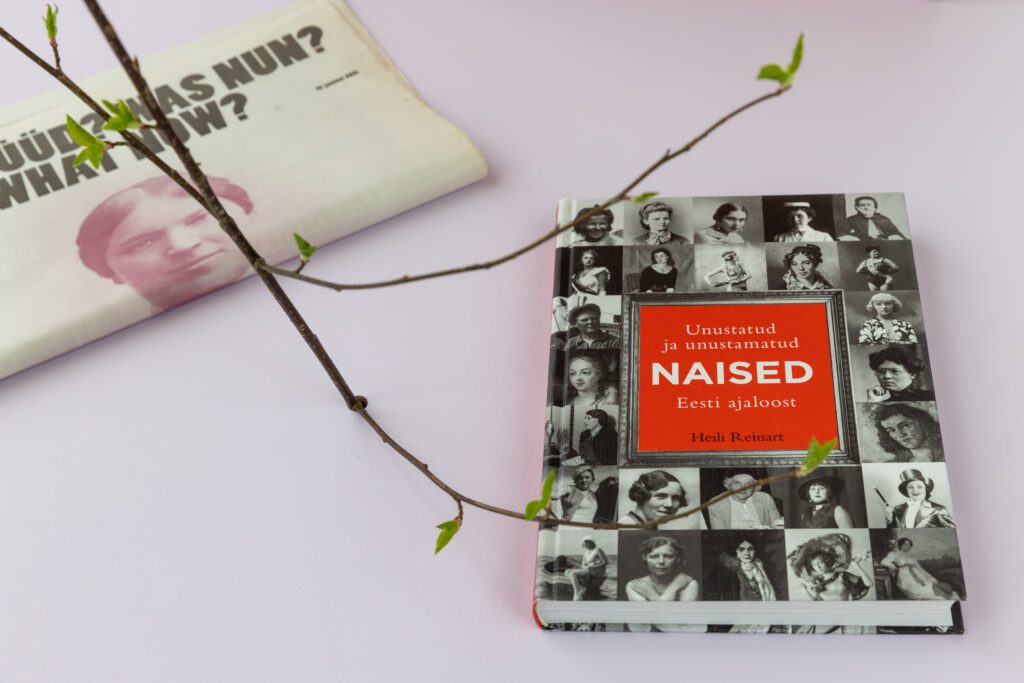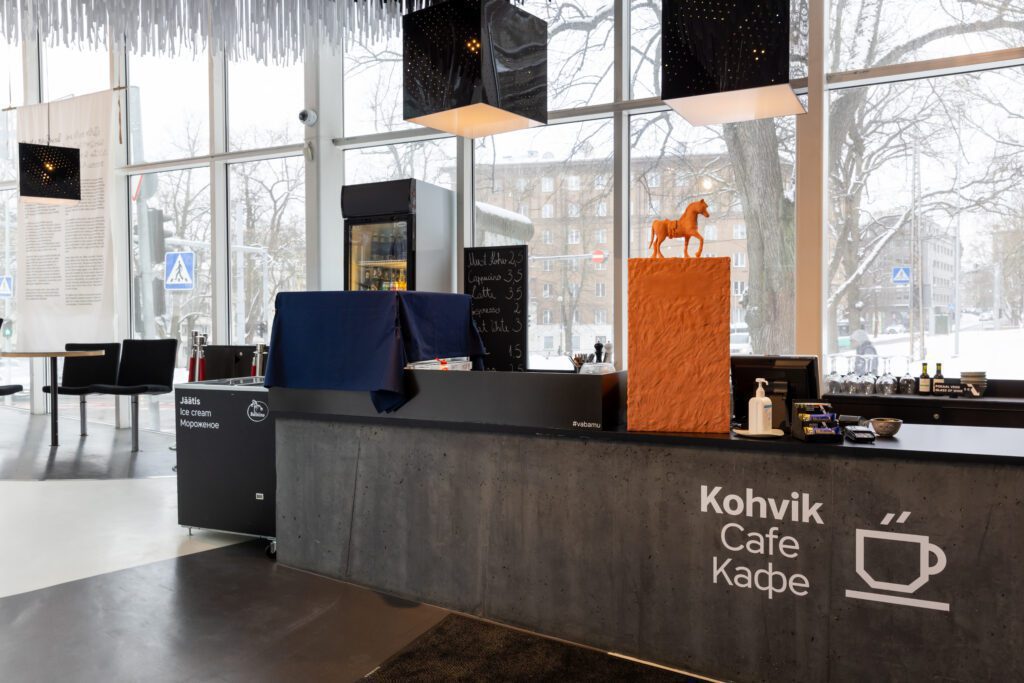- Temporary exhibitions
“Escape the Kitchen!” 150 years of Estonian Women’s Movements
The exhibition was open in Vabamu 8.03.2023–10.03.2024
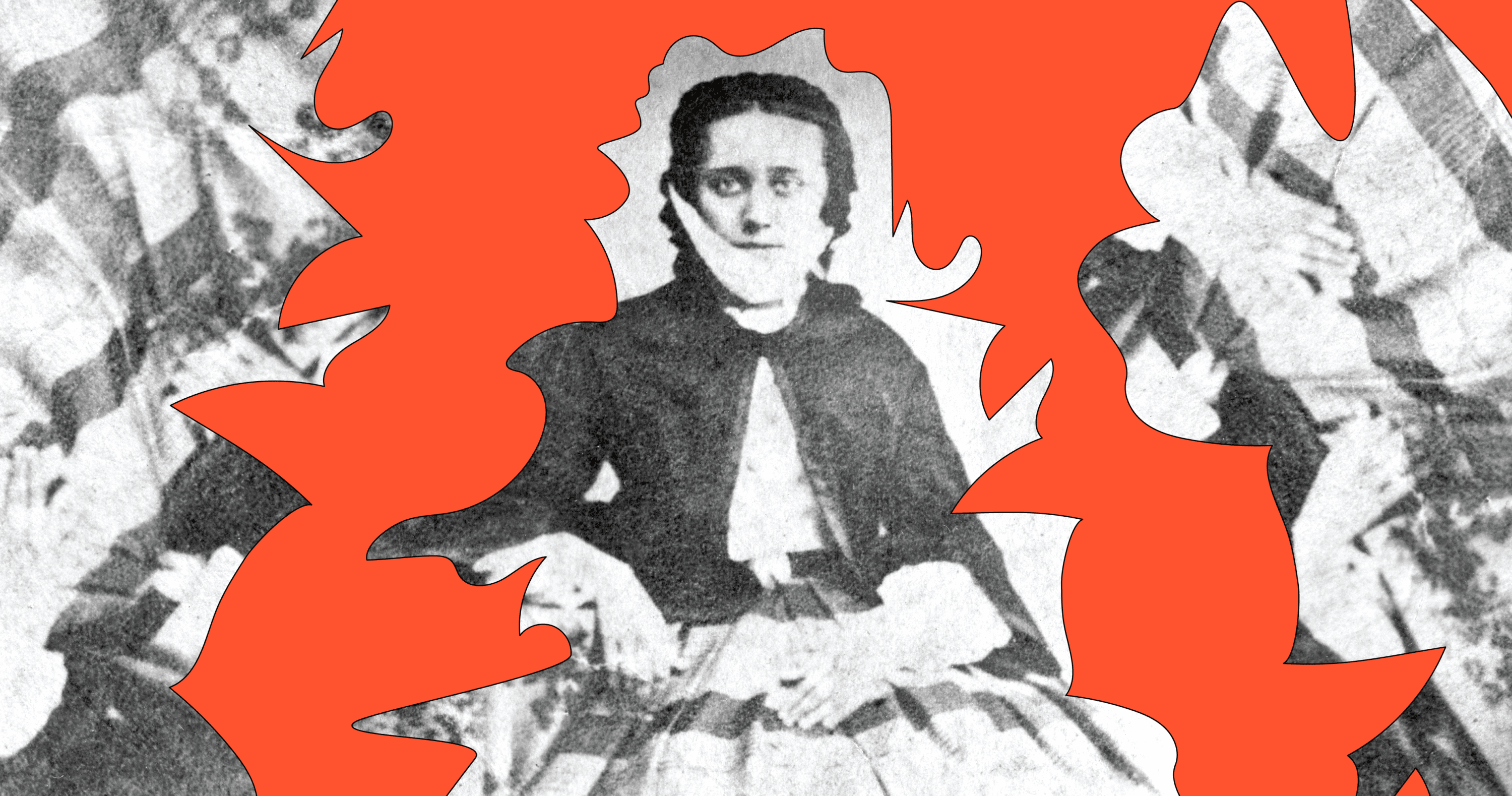
The curator of the exhibition is Piret Karro, artist Flo Kasearu, decorator Kaisa Sööt and graphic designer Sandra Kosorotova. The exhibition is accompanied by a diverse public programme.
Throughout Estonian history there have been powerful women who have helped build democracy, but whose names have been unjustly omitted from the history books. Lilli Suburg was in the same rooms as Carl Robert Jakobson and Jakob Hurt. Mari Raamot and Minni Kurs-Olesk also sat in the same meeting chambers where Konstantin Päts and Lui Olesk were present. In an independent and free country, women must also be independent and free – this understanding has been valid in the democracy-building process since the time of Estonia’s national awakening for the last 150 years. However, this is not taught in history lessons. With this exhibition, that opened in March, Vabamu wants to give women who have been forgotten by history a dignified and equal place alongside the men we all know and consider to be the great figures of our country’s history.
The exhibition is based on Piret Karro’s study titled “150 years of Estonian feminism”, which was published as an article in the Vikerkaar magazine in spring 2022 and looks at the history of Estonian feminism.
Piret Karro: “In this study I try to arrange our women’s movements on a timeline from 1872, when weavers and spinners rose up against inhumane working conditions in Narva until the present day, 2022. That adds up to a round 150 years. Rather than attempting to present the whole truth of history, I offer kaleidoscopic surface currents from the lives, toils and creations of important women whose further exploration this article will hopefully inspire, not to mention all the feminists that I could not fit into this format.”
The exhibition is divided into seven sections:
1. The legacy of Lilli Suburg – the first school for girls and the first newspaper for women
2. The Kreenholm strike of 1872 and the intersection of the women’s movement with the workers’ movement
3. Women’s societies in the first period of the Republic of Estonia and the economically independent woman
4. What happened in 1941? The beginning of the occupation and the dissolution of the Women’s Union
5. Leida Laius, Malle Meelak and other women in the Estonian cultural canon
6. The return of feminism in newly independent Estonia – lesbian movement, contemporary art
7. Current situation and the kaleidoscope of feminist practices in democratic Estonia
Artist Flo Kasearu has, just for this exhibition, created a series of sculptures titled The Monumental Neglect which is made up of equestrian monuments dedicated to important women. There are women from every era whose monument cannot be found in Estonian cities, but who certainly deserve one.
“Throughout history, equestrian monuments have been created to honour only men, and now is the time to right this wrong. Under the guidance of Flo Kasearu, we are creating interesting and humorous miniature equestrian monuments that will help visitors remember the main characters of the exhibition,” Karro added.
The mission of Vabamu is to preserve freedom and equality in society. Estonia has a high gender pay gap to the detriment of women and an education gap to the detriment of men, a high level of violence against women, a high number of male suicides, etc. With this exhibition, the museum hopes to contribute to a more equal society, empowering women to make bolder choices and men to deal with their more sensitive side. The exhibition is meant for a wide range of target groups, as everyone stands to gain from a more equal society.
The exhibition is presented in Estonian, English and Russian, and welcomes all those interested in Estonian history, young women who want to be the protagonists of their own lives, and young men who want to smash gender stereotypes.
The project manager of the exhibition is Krislin Kämärä and the language editor is Hille Saluäär.
Supporters and partners of the exhibition are: National Heritage Board, Vikerkaar culture magazine, National Archives, Film Archives, Estonian Public Broadcasting Archives, Viljandi Museum, Narva Museum, Harjumaa Museum, Under and Tuglas Literature Centre, C. R. Jakobson Farm Museum, Estonian Literary Museum, History Museum, Estonian National Museum, Estonian Theatre and Music Museum, Estonian Centre for Contemporary Art.
The curator thanks: Terje Toomistu, Lilian Hiob, Marge Monko, Katrin Kivimaa, Airi Triisberg, Maria Muuk, Mari-Leen Tammela, Aet Kuusik, Rebeka Põldsam, Aro Velmet and the Vikerkaare editor.

 Back
Back